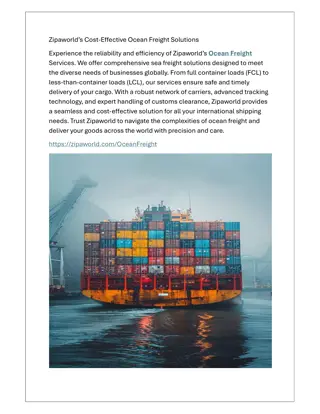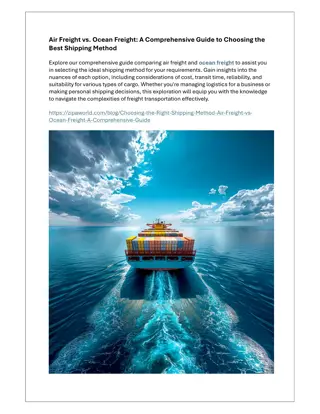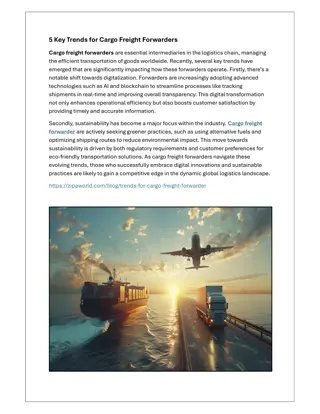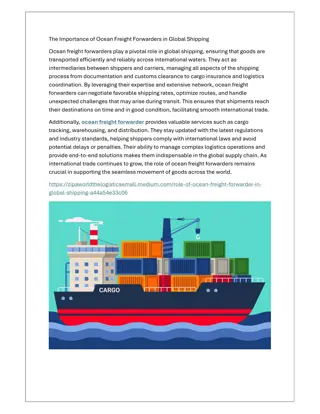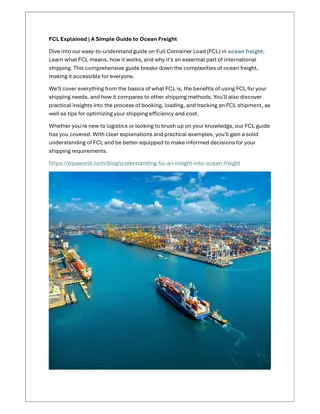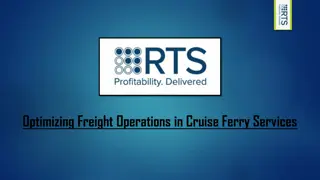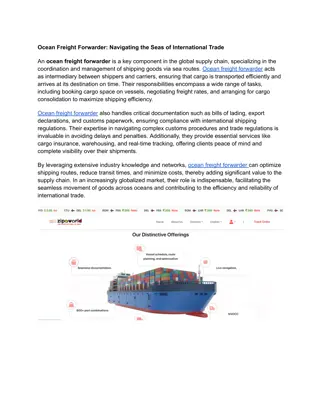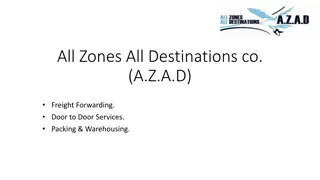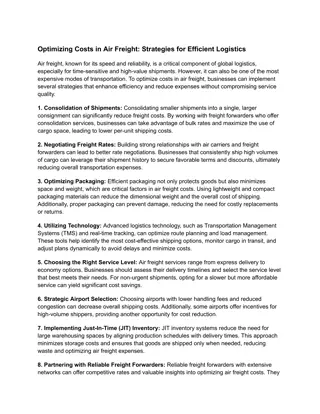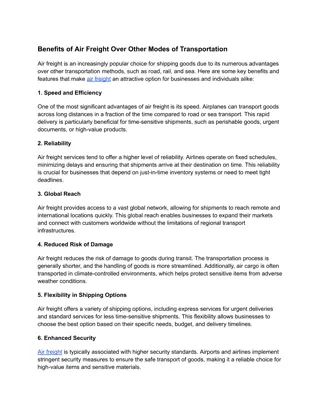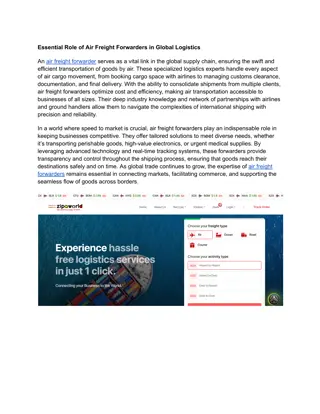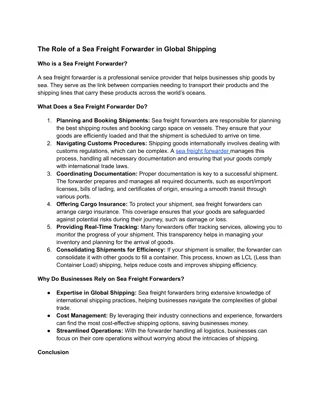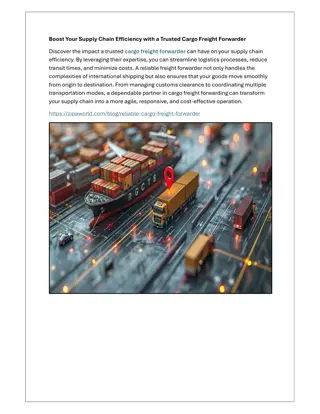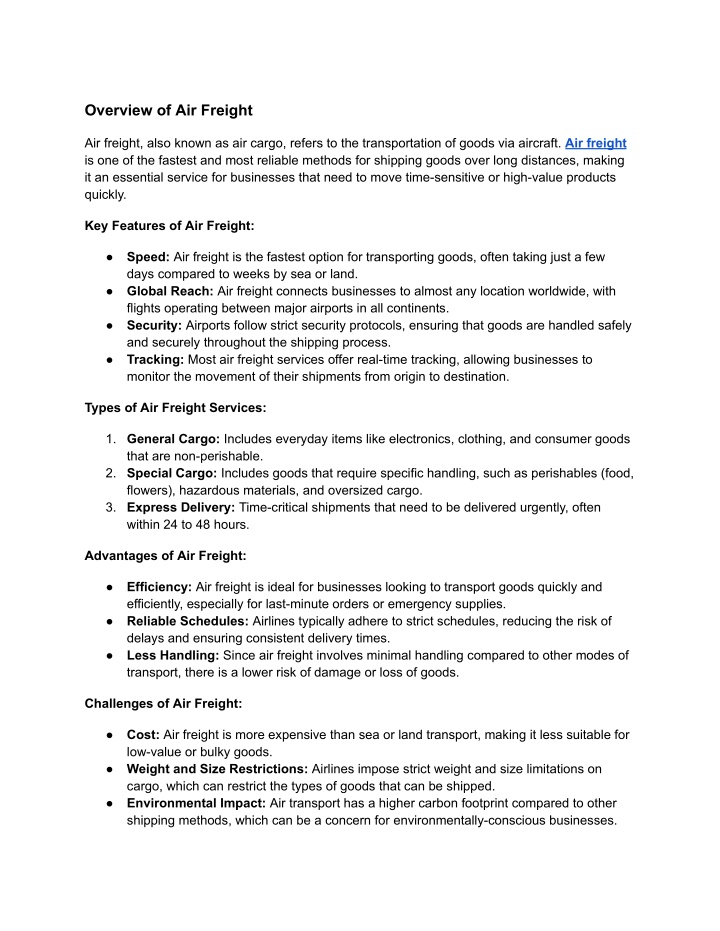
Overview of Air Freight
Air freight is the process of shipping goods by airplane, and itu2019s one of the quickest ways to send items over long distances. Businesses often use it when they need to transport valuable or time-sensitive products fast, like electronics or medi
Download Presentation

Please find below an Image/Link to download the presentation.
The content on the website is provided AS IS for your information and personal use only. It may not be sold, licensed, or shared on other websites without obtaining consent from the author. If you encounter any issues during the download, it is possible that the publisher has removed the file from their server.
You are allowed to download the files provided on this website for personal or commercial use, subject to the condition that they are used lawfully. All files are the property of their respective owners.
The content on the website is provided AS IS for your information and personal use only. It may not be sold, licensed, or shared on other websites without obtaining consent from the author.
E N D
Presentation Transcript
Overview of Air Freight Air freight, also known as air cargo, refers to the transportation of goods via aircraft. Air freight is one of the fastest and most reliable methods for shipping goods over long distances, making it an essential service for businesses that need to move time-sensitive or high-value products quickly. Key Features of Air Freight: Speed: Air freight is the fastest option for transporting goods, often taking just a few days compared to weeks by sea or land. Global Reach: Air freight connects businesses to almost any location worldwide, with flights operating between major airports in all continents. Security: Airports follow strict security protocols, ensuring that goods are handled safely and securely throughout the shipping process. Tracking: Most air freight services offer real-time tracking, allowing businesses to monitor the movement of their shipments from origin to destination. Types of Air Freight Services: 1. General Cargo: Includes everyday items like electronics, clothing, and consumer goods that are non-perishable. 2. Special Cargo: Includes goods that require specific handling, such as perishables (food, flowers), hazardous materials, and oversized cargo. 3. Express Delivery: Time-critical shipments that need to be delivered urgently, often within 24 to 48 hours. Advantages of Air Freight: Efficiency: Air freight is ideal for businesses looking to transport goods quickly and efficiently, especially for last-minute orders or emergency supplies. Reliable Schedules: Airlines typically adhere to strict schedules, reducing the risk of delays and ensuring consistent delivery times. Less Handling: Since air freight involves minimal handling compared to other modes of transport, there is a lower risk of damage or loss of goods. Challenges of Air Freight: Cost: Air freight is more expensive than sea or land transport, making it less suitable for low-value or bulky goods. Weight and Size Restrictions: Airlines impose strict weight and size limitations on cargo, which can restrict the types of goods that can be shipped. Environmental Impact: Air transport has a higher carbon footprint compared to other shipping methods, which can be a concern for environmentally-conscious businesses.
When to Use Air Freight: Air freight is best suited for high-value, time-sensitive shipments such as electronics, pharmaceuticals, or perishable goods. Businesses that prioritize speed and reliability over cost often choose air freight as their primary shipping method. In conclusion, air freight plays a crucial role in global trade, providing businesses with the speed and reach they need to operate efficiently. Whether you're shipping across the country or across the globe, air freight ensures your goods arrive on time and in perfect condition.


